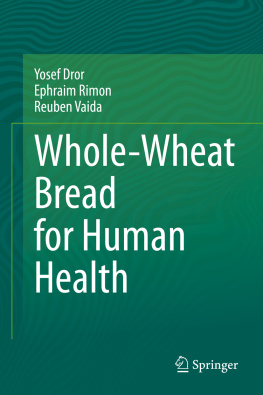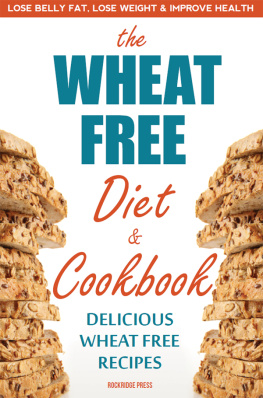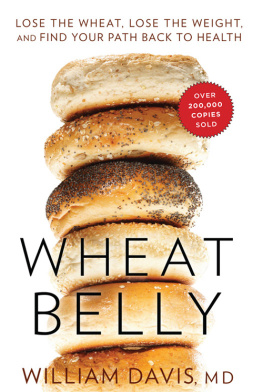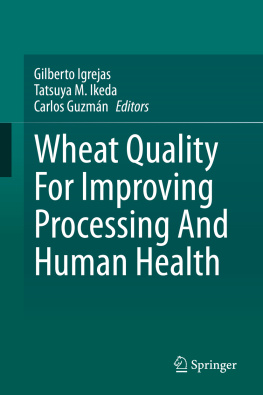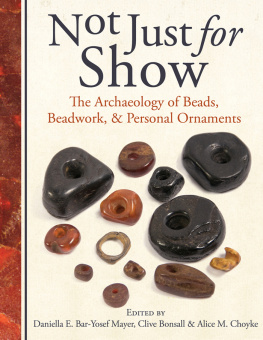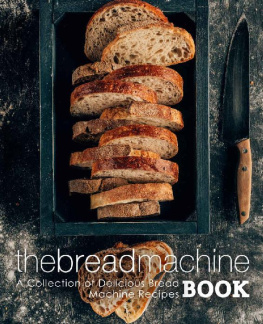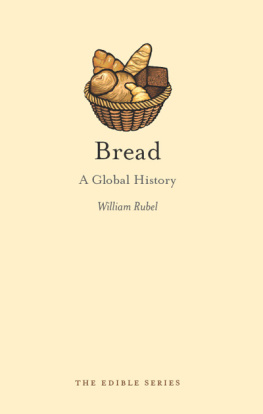Yosef Dror - Whole-Wheat Bread for Human Health
Here you can read online Yosef Dror - Whole-Wheat Bread for Human Health full text of the book (entire story) in english for free. Download pdf and epub, get meaning, cover and reviews about this ebook. year: 2020, publisher: Springer International Publishing, genre: Romance novel. Description of the work, (preface) as well as reviews are available. Best literature library LitArk.com created for fans of good reading and offers a wide selection of genres:
Romance novel
Science fiction
Adventure
Detective
Science
History
Home and family
Prose
Art
Politics
Computer
Non-fiction
Religion
Business
Children
Humor
Choose a favorite category and find really read worthwhile books. Enjoy immersion in the world of imagination, feel the emotions of the characters or learn something new for yourself, make an fascinating discovery.
- Book:Whole-Wheat Bread for Human Health
- Author:
- Publisher:Springer International Publishing
- Genre:
- Year:2020
- Rating:5 / 5
- Favourites:Add to favourites
- Your mark:
- 100
- 1
- 2
- 3
- 4
- 5
Whole-Wheat Bread for Human Health: summary, description and annotation
We offer to read an annotation, description, summary or preface (depends on what the author of the book "Whole-Wheat Bread for Human Health" wrote himself). If you haven't found the necessary information about the book — write in the comments, we will try to find it.
Whole-Wheat Bread for Human Health — read online for free the complete book (whole text) full work
Below is the text of the book, divided by pages. System saving the place of the last page read, allows you to conveniently read the book "Whole-Wheat Bread for Human Health" online for free, without having to search again every time where you left off. Put a bookmark, and you can go to the page where you finished reading at any time.
Font size:
Interval:
Bookmark:
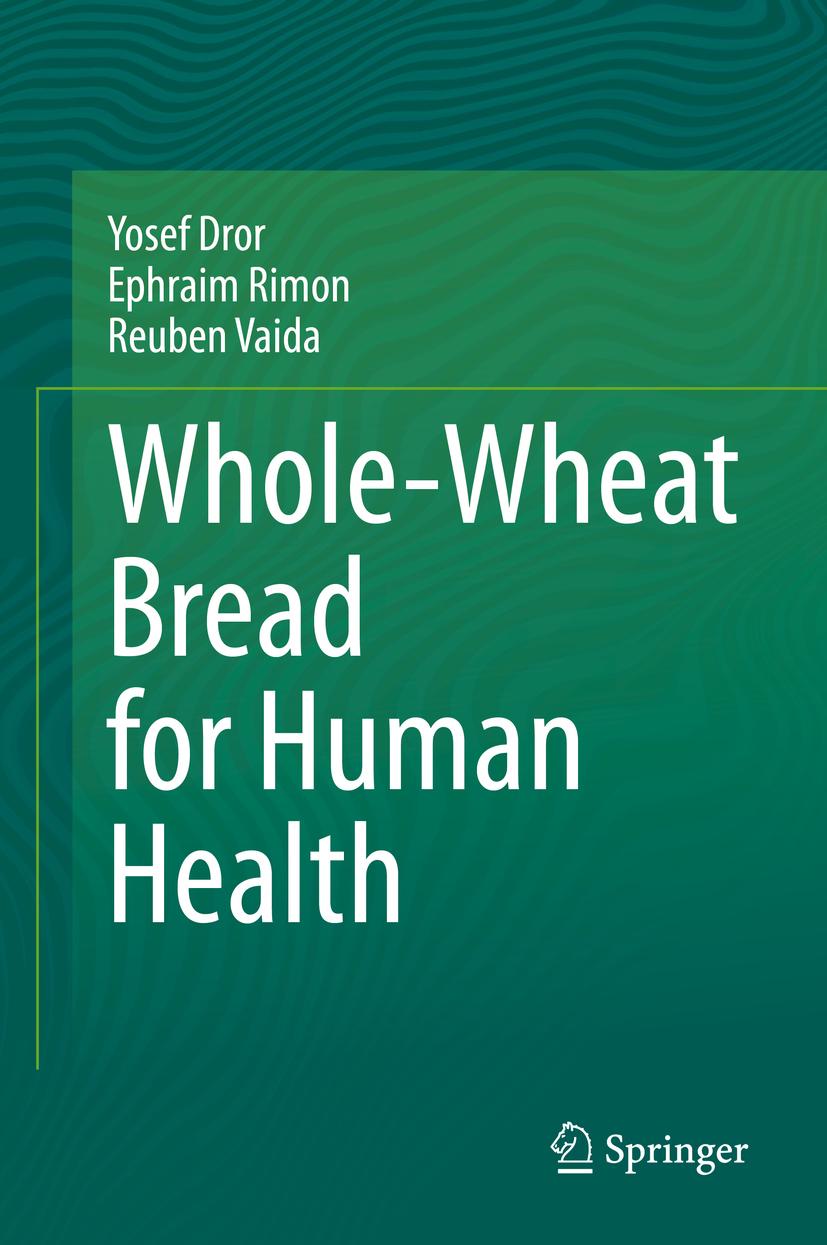

This Springer imprint is published by the registered company Springer Nature Switzerland AG
The registered company address is: Gewerbestrasse 11, 6330 Cham, Switzerland


Whole wheat with high kernel envelope content and with relatively small endosperm was the main staple food and the main pillar of the Western civilization during the millennia when the Western civilization evolved. The plethora of anti-oxidant components that are mostly bound to carbohydrates and the related ingredients have protected and enabled the survival of wheat kernel and supported its spreading over the globe. With wheat cultivation, these compounds have sustained the human population. However, during the long run of wheat breeding, wheat was selected for a higher kernel weight and a higher endosperm (starch) content, followed by an extreme decrease in the dietary fiber and a marked reduction in hundreds of compounds, maintaining the anti-oxidant capacity and other compounds with alleviative flour quality of health claim. Along with the history of wheat cultivation and harvesting, wheat flour is consumed unrefined. Since the ancient eras, tiny amounts of wheat flour were refined to produce white flour with a higher quality of dough but with a lower nutritious quality. People have used to believe that white bread is most nutritious than the black whole bread. Such a notion is still believed.
The industrial revolution, at the second half of the nineteenth century, enabled mass refining of flour and drove more and more people to consume refined flour and throw away most of the nutritious ingredients embedded in the wheat bran for animal feeding.
The main target of the present book is to restore the consumption of the whole-wheat bread for the well-being of the people.
In the last two to three decades, the quality of dough and the baking quality of whole flour have tremendously improved by the introduction of a long list of baking improvers and baking technologies. Concomitantly, the nutritious predominance of the whole-wheat flour was gradually explored and published. Thus, the advantage of the whole bread has become a fundamental nutritional recommendation. Even so, whole bread consumption, in most of the countries, covers less than 20% of bread consumption.
As we clearly show (Chap.), the consumption of the whole bread lowers the incidence of many NCD (noncommunicable disease) very significantly. This impact is evaluated by 20 categories of morbidity and cause of mortality, including various vascular disorders and malignancy incidence, based on studies including more than 37 million subjects, within hundreds of studies around the globe.
Such an evidence-based effect, produced by consumption of one essential food has presumably never been previously shown. The facts presented here might help to convince health authorities to undertake active measures to recommend and enhance whole bread consumption.
We presume that beyond the reduction in the relative risk of morbidity and mortality, by a routine whole bread, it would also reduce the disability years of aging. Such a burden embraces a major load on the individual, his family, and the society which is estimated to have an average of 3 hard life years for each individual. The explanation for such an effect is described in details in this book.
The incidence for each of the 19 defined categories of morbidity and mortality has reduced by about 25% (relative risk of 0.75) in subjects consumed whole-wheat bread versus refined-flour bread.
The dietary fiber is considered as the major or the sole element supporting the health benefit of the whole bread. Indeed, adequate consumption of the whole bread accomplishes the prevailed inadequate dietary fiber intake. However, the dietary fiber is only part of the whole bread story since it contains a wide plethora of other ingredients and particularly the bound phenolic compounds found in high concentration in the whole bread.
The consumption of white bread has severely contradicted the food security fundamental issue that is accepted by all health authorities. This book presents data concerning the composition and the average concentrations of hundreds of the kernel compounds gathered from over 210 publications with further description of these ingredients.
Except for the effect of the whole bread on the decrease in the incidence of the main morbidities, some other effects are described such as those of the yellow pigments on ophthalmologic burdens and various ingredients of the whole bread on the aging of cellular activities such as autophagy with its major role in the brain integrity.
Adherence to the gluten-free diet (GFD) is an important practice to prevent damage for the celiac wheat-sensitive people that comprise a small population segment (<1%). However, expanding of such practice for other people deprived them from the wide benefits of the wheat kernel and surges the dietary expenses. The description of the celiac and the wheat sensitivity issues are also detailed here as well as the possible damage of the unnecessary use of GFD.
Font size:
Interval:
Bookmark:
Similar books «Whole-Wheat Bread for Human Health»
Look at similar books to Whole-Wheat Bread for Human Health. We have selected literature similar in name and meaning in the hope of providing readers with more options to find new, interesting, not yet read works.
Discussion, reviews of the book Whole-Wheat Bread for Human Health and just readers' own opinions. Leave your comments, write what you think about the work, its meaning or the main characters. Specify what exactly you liked and what you didn't like, and why you think so.

